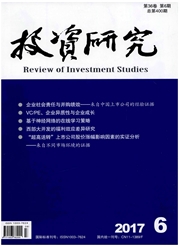

 中文摘要:
中文摘要:
本文在Frankel and Wei(2008)方法的基础上,通过因子分析、滚动回归等方法解构汇改后的人民币汇率制度。首先,货币篮子构成具有时变性。美元占比虽在下降但仍最大;欧元曾占有10%以上份额,近几年却保持较低比例;东亚货币①在篮子中的重要性加大。我们认为国际货币体系格局、人民币国际化与东亚货币合作是决定我国货币篮子构成的最重要因素。第二,对外汇市场压力的反应、人民币升值、货币篮子构成的动态调整均体现了人民币汇率的弹性。第三,汇改后人民币实际有效汇率的波动具有自动稳定的功能。
 英文摘要:
英文摘要:
Based on the methodology proposed by Frankel and Wei(2008), this paper employs rolling regression, factor analysis to demonstrate Renminbi exchange rate regime after reform. First, the structure of currency basket is time-varying. US dollar holds the biggest share despite of the declining trend; Euro once accounted for over 10%, but now has light weight; East Asian currencies show growing significance in the basket. We conclude that the pattern of International Currency System, the internationalization of Renminbi and cooperation of Asian currencies are the main determinants of the structure of currency basket.Second, reaction to exchange market pressure, and dynamic adjustment of appreciation of Renminbi and currency basket structure all reflect the flexibility of Renminbi exchange rate. Third, real effective exchange rate of Renminbi after reform can stabilize its our volatility.
 同期刊论文项目
同期刊论文项目
 同项目期刊论文
同项目期刊论文
 期刊信息
期刊信息
